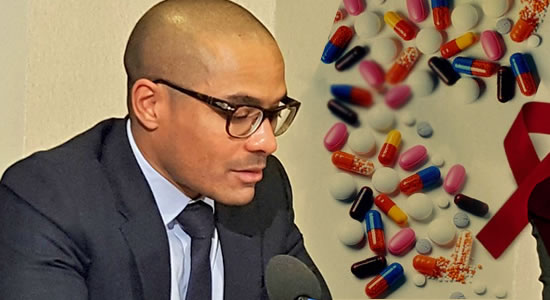The Aurum Institute and its partners, as part of the IMPAACT4TB project, announced on Tuesday, March 24, 2020 that five high-burden TB countries would roll out a new, shorter drug regimen (known as 3HP) to prevent TB.

The announcement comes as countries around the world mark World TB Day, which takes place every year on March 24. Countries that will initially provide the new regimen with funding from Unitaid, U.S. PEPFAR and the Global Fund include Cambodia, Ethiopia, Kenya, Malawi, South Africa and Zimbabwe.
More than 120,000 patient courses of 3HP will be delivered by the project to 12 countries in 2020.
An additional one million patient courses are expected to reach low- and middle-income countries by the end of the year, through the combined support of Unitaid, Global Fund, the Stop TB Partnership’s Global Drug Facility (GDF) and PEPFAR.
The new regimen consists of three months of rifapentine and isoniazid treatment. The previous standard of care – isoniazid preventive therapy (IPT) – was said to be long and complex, with people required to take a pill daily for six to 36 months. The 3HP regimen, taken only once a week for 12 weeks, offers numerous benefits for infected individuals, clinicians and programsme. Evidence shows that it’s as effective as IPT in preventing progression to active TB disease, has fewer side effects, more patients complete the regimen and is easier for patients to take.
“Effective TB prevention will be a game-changer in the global fight to eliminate tuberculosis,” said Robert Matiru, director of programmes at Unitaid. “This new, shorter regimen, which has until now been unaffordable, offers a great opportunity to turn the tide against TB and protect those who are at highest risk. Preventing this deadly, airborne disease is even more important at a time when the entire world fights to control the threat of COVID-19 and where health systems are being stretched beyond their limits.”
TB remains the world’s deadliest infectious disease. In 2018 alone, 10 million people fell ill from the disease which killed around 1.5 million people, over 95% of whom were living in low- and middle-income countries.
TB can lie dormant for decades before it strikes; this is called “latent TB.” People with latent infection – almost a quarter of the globe – have no symptoms, are not contagious and most of them don’t know they are infected. If left untreated, latent infection can develop into active TB, the form of TB that makes people sick and is capable of being transmitted from one person to another.
“This is an exciting new step in the fight to end TB, as it is safer, shortens the duration of preventive therapy and provides more options for those at highest risk of developing active TB,” said Dr Tereza Kasaeva, Director of the Global TB programme at WHO.
“WHO, through its regional and country offices, is committed to support scale-up of TB preventive treatment in countries to achieve the UN HLM targets. These countries will pave the way for 3HP rollout in other TB high burden countries.”
During this first phase, 3HP will first be given to those at highest risk of progressing from TB infection to TB disease, notably people living with HIV (PLHIV) and children under the age of five. People living with HIV are 20 to 37 times more likely to move from latent to active TB than those without HIV infection. Often, their infection goes unnoticed until it’s too late, and as a result people being successfully treated for HIV are now dying from TB.
At the UN High-Level Meeting on TB in 2018, world leaders committed to providing TB preventive therapy to at least 30 million people, including six million people living with HIV, by 2022, four million children under five years and 20 million household contacts.
